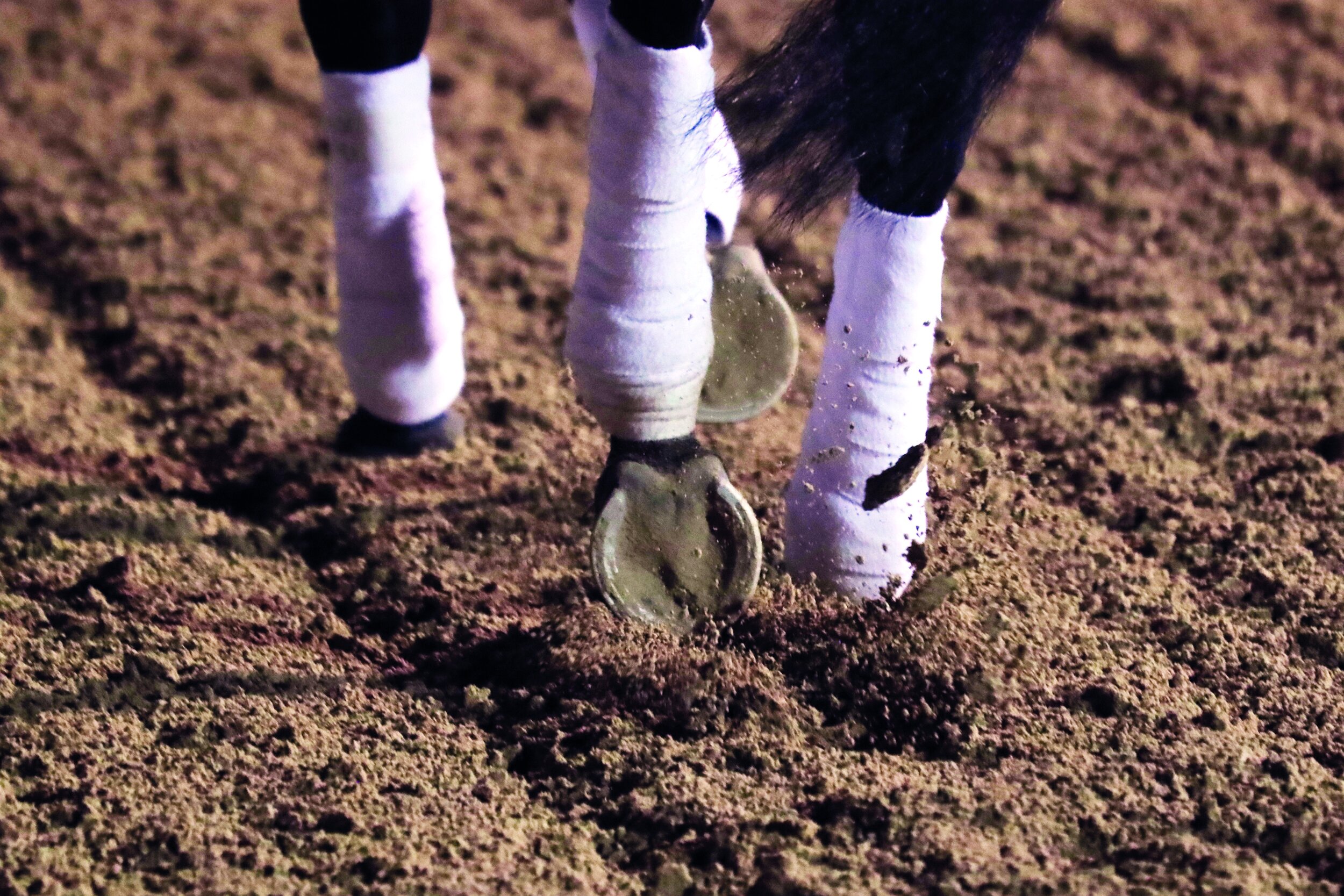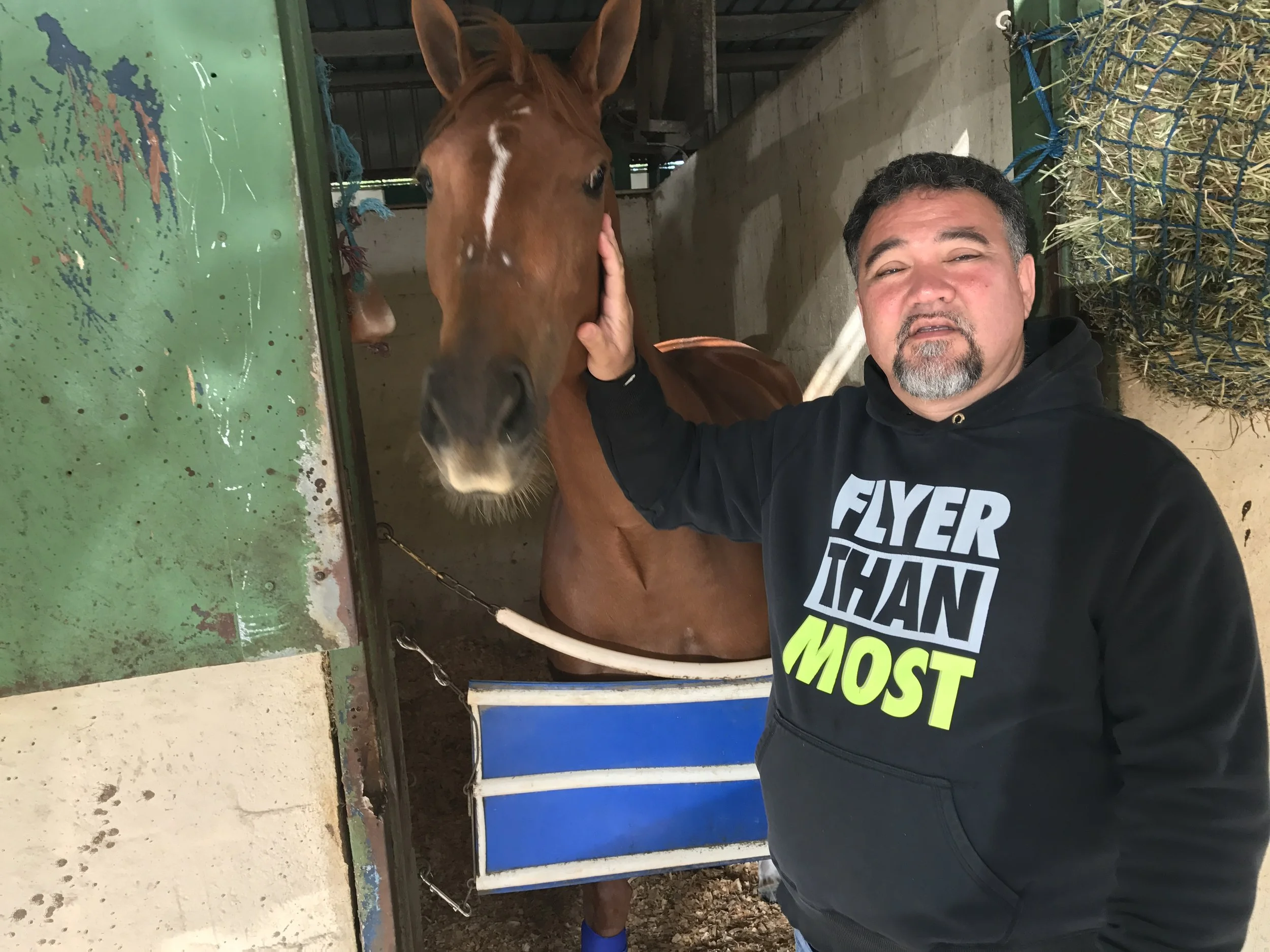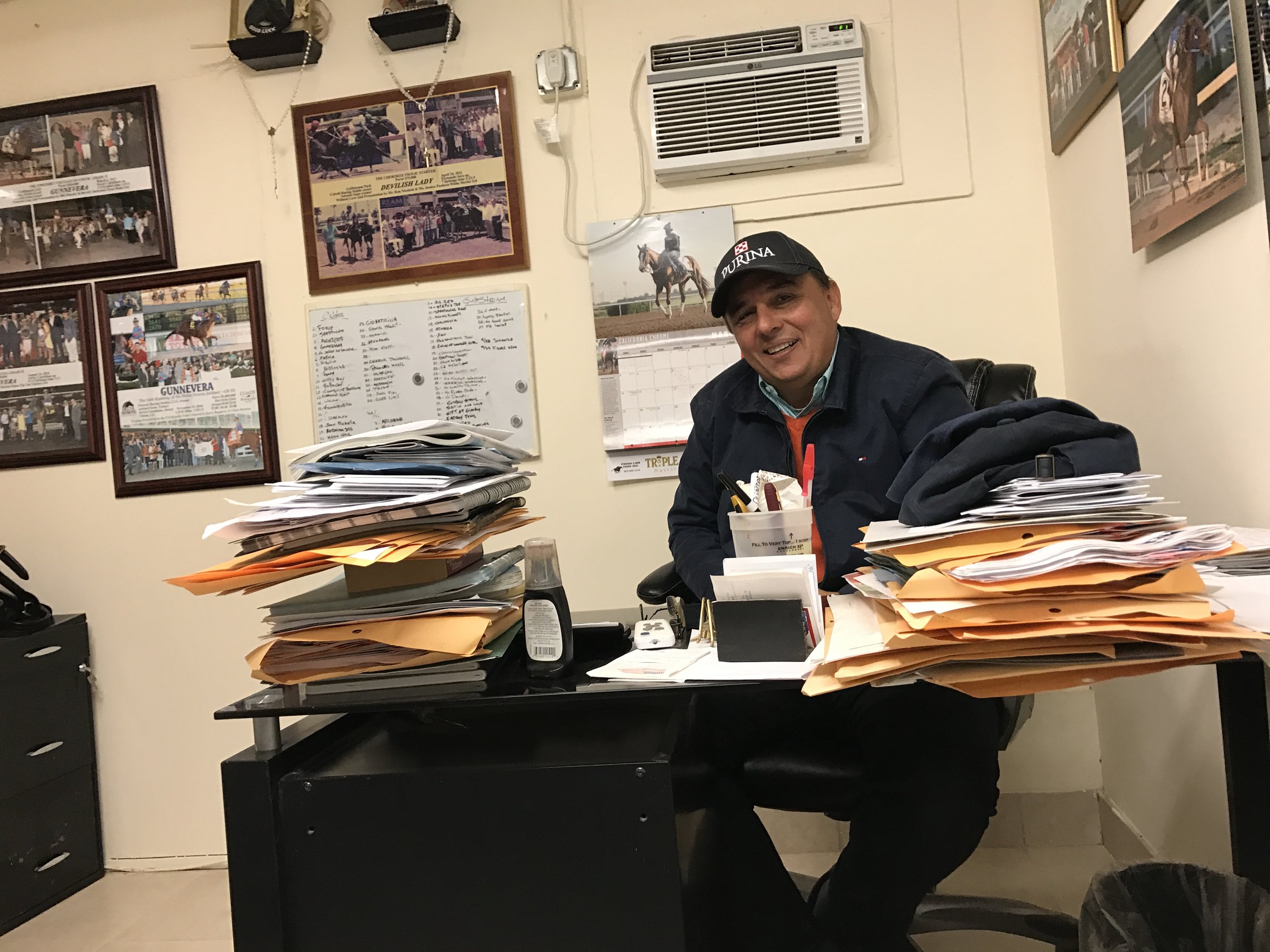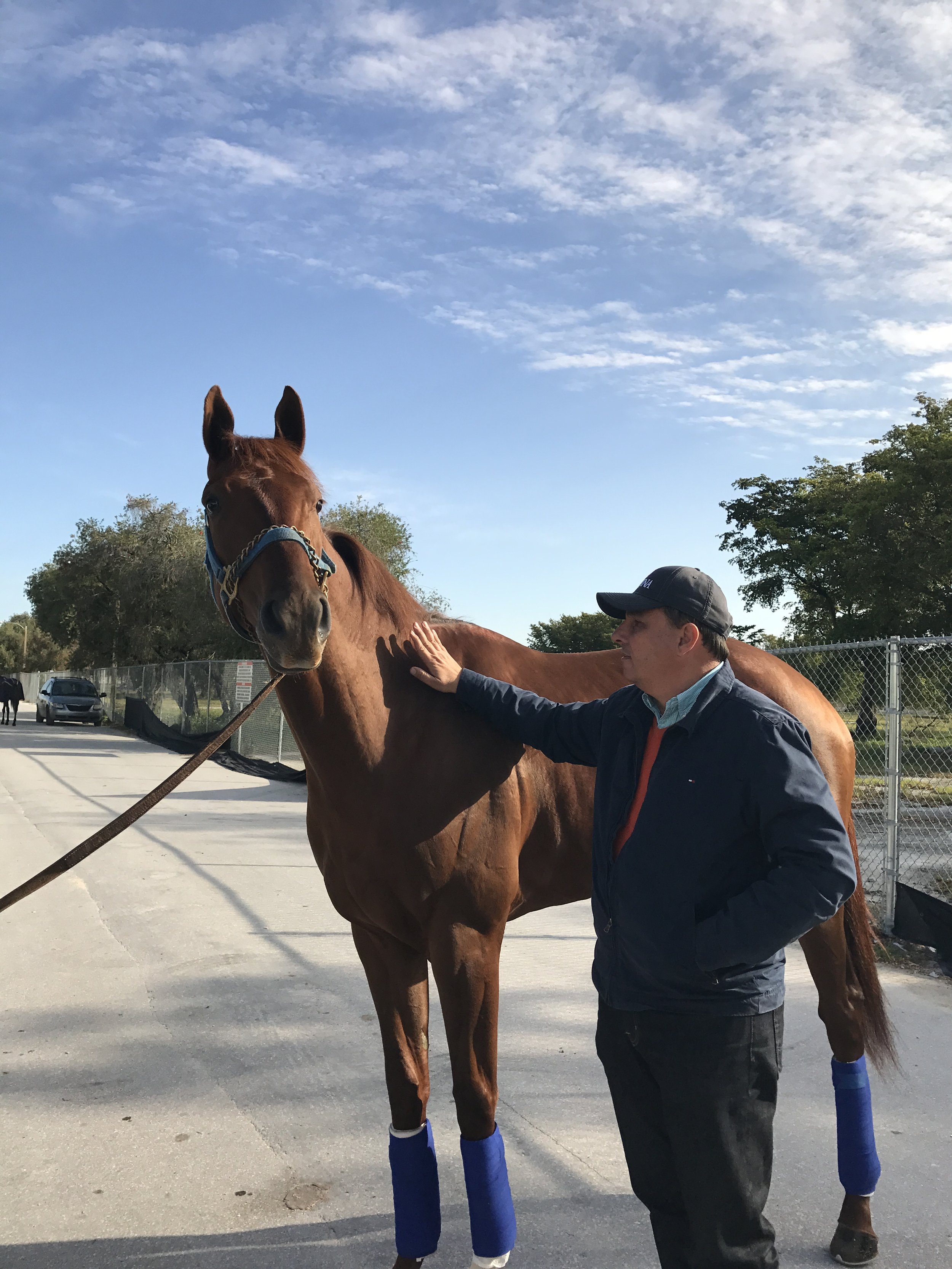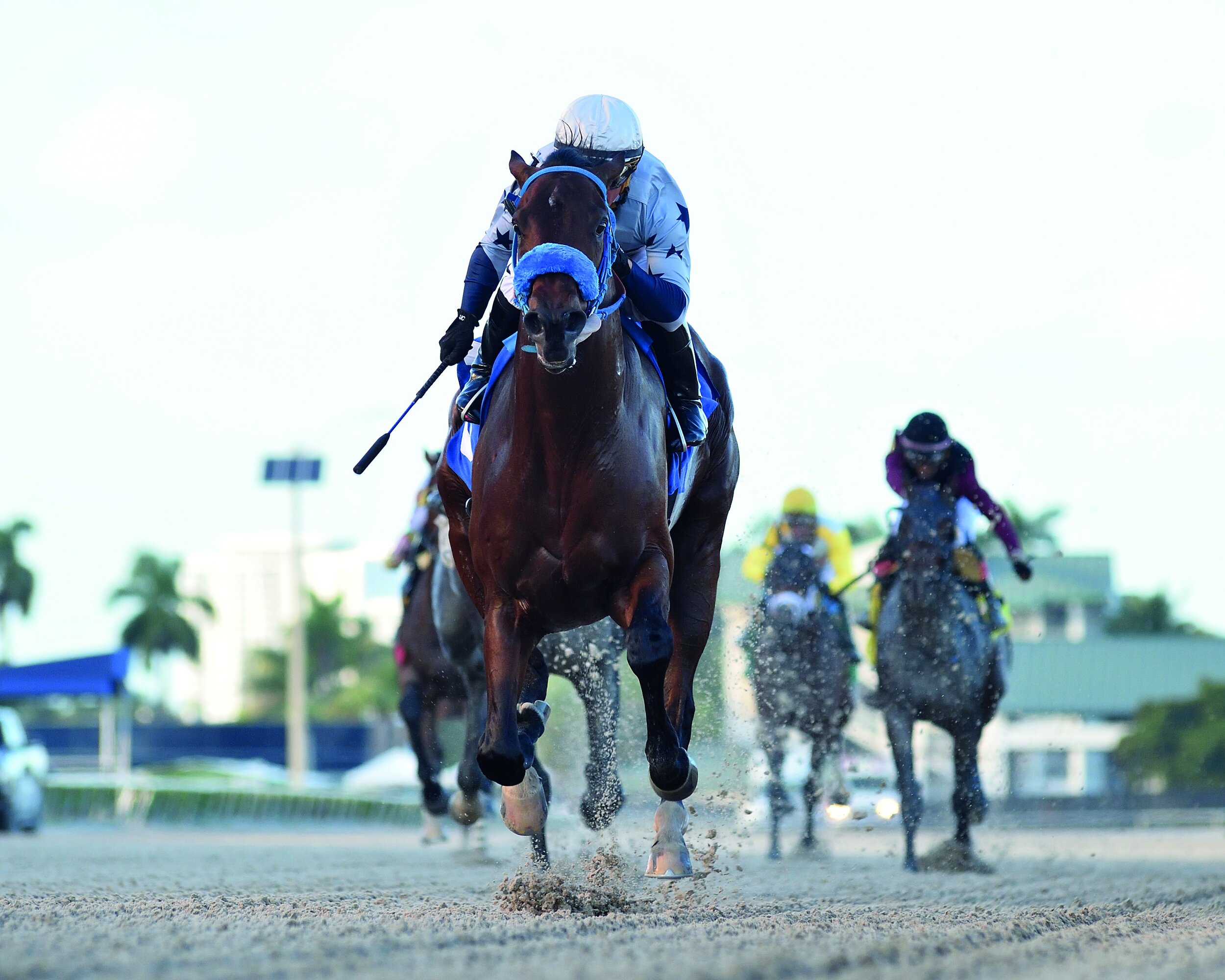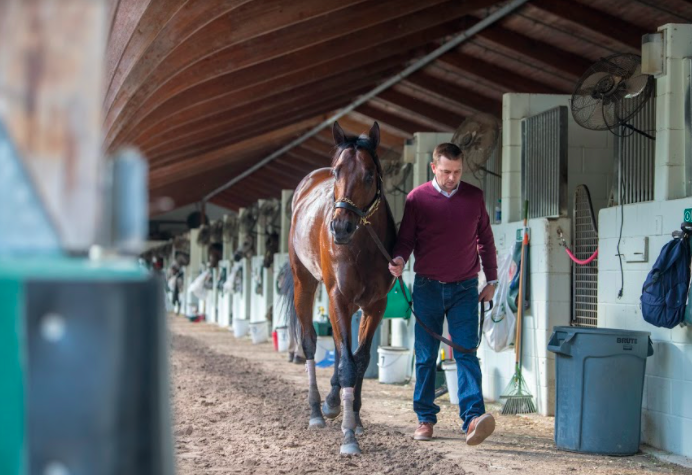Changing Paths: How the Road to the Kentucky Derby Has Changed the Path to the Triple Crown
/Article by Jennifer Kelly
The Triple Crown has evolved into more than three historic stakes races; indeed, it dominates the first half of the racing calendar, driving the complexion of the three-year-old division and influencing both owners’ and trainers’ goals for their horses. The first of the three, the Kentucky Derby, has become the stuff of dreams, inspiring many owners of a young Thoroughbred to pursue their own piece of history. Preparing a horse for the first Saturday in May has taken on a new dimension with the addition of the Road to the Kentucky Derby points system.
How much has this new priority affected trainers’ plans for their Triple Crown hopefuls? While trainers remained focused on preparing their horses to peak in late spring, how they get there has changed in the decades between the first eleven Triple Crowns and the 21st century’s two winners, a change that is both a result of and an influence on the approach to the Derby prep season.
Path to the Crown
Preparing for a Triple Crown campaign over the last century has been as individual a pursuit as the horses themselves with the approach falling into a pattern in the later decades. Sir Barton went into the 1919 Kentucky Derby a maiden with no starts before his trip to Churchill Downs, a strategic move on trainer H.G. Bedwell’s part: the Derby had maiden allowance conditions at the time, which meant that the son of Star Shoot went to the starting line carrying twelve pounds less than favorites Eternal and Billy Kelly.
Gallant Fox had only the Wood Memorial ahead of the Preakness Stakes, which came first in 1930. Counting that classic, the Fox had two races prior to his turn at Churchill Downs. His son Omaha was similarly tested in 1935; he opened his season with a win in a one-mile, 70-yard allowance before finishing third in the Wood Memorial at the same distance. War Admiral started 1937 with wins in a six-furlong allowance and then the 1 1/16-mile Chesapeake Stakes before heading to Louisville.
The four Triple Crown winners of the 1940s were war horses not just because of the international context of that decade, but also because of their preparations for the triad of races. Whirlaway raced seven times at distances from 5½-furlong sprints to 1⅛-mile tests between early February and the first Saturday in May and all were in-the-money finishes as Ben Jones struggled to find a solution for the colt’s tendency to bear out on the far turn. Count Fleet echoed Omaha with his two starts in an allowance and the Wood Memorial, winning both. Assault started his path to Derby with three starts, a six-furlong sprint, the 1 1/16-mile Wood Memorial, and then the one-mile Derby Trial two days before the big race. Citation raced eight times in early 1948, finishing second only once, before his Kentucky Derby, starting with a six-furlong sprint in early February and stretching out to 1 1/8 miles twice.
Secretariat’s path to Louisville went through a trio of races in New York, progressively lengthening the distance from seven furlongs in the Bay Shore to 1⅛ miles in the Wood Memorial. Seattle Slew had a similar preparation in 1977, stretching out from a sprint to nine furlongs, while Affirmed started four times, starting with a win in a 6½-furlong allowance, in California before coming west for his 1978 Triple Crown run.
Keeneland Library Morgan Collection - War Admiral with C. Kurtsinger after winning Preakness Stakes 05.15.1937
Most of the first eleven winners prepared with races increasing in length as the first Saturday in May grew closer. While the number of races to get there varied by horse, that philosophy remained mostly unchanged, though now the need for points puts a heavier influence on the choice of prep races for potential Triple Crown horses.
A New Approach
Prior to 2013, the conditions for entry into the Kentucky Derby evolved from paying the entry fees to using criteria like graded stakes earnings to rank potential starters ahead of the first Saturday in May. The oversized 23-horse field in 1974 made it clear that the field size for the first Triple Crown classic needed to be capped. The following year, Churchill Downs limited the field to 20 horses with career earnings as the criteria for qualification. Contrast this with the Preakness and the Belmont Stakes, which both have 14-horse limits.
As 20-horse fields became more common in the 1980s and onward, Churchill Downs had to change their metric from career earnings to stakes earnings to graded stakes earnings. The points system evolved as a fairer solution to the problem of qualifying for the Derby starting gate. In 2024, the Road to the Kentucky Derby series offered 37 races with points ranging from 1 point for fourth place in an early prep to 100 points for the top tier qualifiers like the Santa Anita Derby, the Wood Memorial, and the Bluegrass Stakes. In addition to the traditional American prep races, Churchill Downs has added both European and Japanese Roads to the Kentucky Derby in an effort to make the race more global.
Since the introduction of the points system in 2013, the number of races for North American horses has remained relatively the same, with the inaugural season counting 36 races and the 2024 edition with 37. To make the Derby more appealing internationally, Churchill Downs added the Japanese series in 2017 and the European in 2018. The series starts with 13 two-year-old races, ranging from one mile to 1 1/8 miles, and then picks up steam in mid-January with the Lecomte at Fair Grounds and ends with the Lexington at Keeneland in mid-April. The same-year series starts with one-mile races and expands to multiple 1 1/8-mile tests, with the Louisiana Derby clocking in as the longest at 1 3/16 miles.
With that in mind, how has this shift from graded stakes earnings to points changed how a trainer approaches conditioning their charges for the five-week Triple Crown season?
Now and Then
Hall of Fame trainer Todd Pletcher is no stranger to the Triple Crown season. Since 2000, he has started 64 horses in the Kentucky Derby with two wins, Super Saver in 2010 and Always Dreaming in 2017, and four Belmont Stakes to his credit, including Rags to Riches, the last filly to win the historic stakes.
Looking back at his first Derby winner, the path to Louisville with Super Saver “was sort of an interesting one because we really got behind schedule. After the Tampa Bay Derby, he got sick, which ended up pushing us back a week, and we ended up landing on the Arkansas Derby as his final prep, when generally we would have preferred to have four or five weeks from our final prep to the Derby itself. Seemed like the horse had the best month of his life during those three weeks leading up to the Derby.” Getting the WinStar colt enough graded stakes earnings to qualify for the first Triple Crown classic worked out with his placings in the Tampa Bay and Arkansas Derbies in addition to his win in the Grade 2 Kentucky Jockey Club Stakes the previous season.
In 2017, though, the road to Louisville required collecting enough points to get into the gate. Always Dreaming started his three-year-old season with a win in a maiden special weight and then Pletcher and the colt’s partnership had to make a decision. “The real conversation that we had to have was whether or not we ran in the Fountain of Youth or if we ran in the allowance race the day of the Fountain of Youth. The horse was training exceptionally well, we were very confident that we were on the path to the Derby, and that we had a legitimate derby contender. But in order to make the decision to run in the allowance race, we had to have everyone on board to say that they were willing to roll the dice on one prep race.”
To earn his points, Always Dreaming then had to win the Florida Derby, his lone stakes before the Derby, where “if we didn't finish in the top two, or even if we finished second, it wasn't guaranteed that we would get in based on points,” Pletcher remembered. “Everyone was comfortable with that decision. Everyone wanted to bring him along that way. In this case, we decided to go with that plan and take a shot with one prep race.” The Bodemeister colt won his lone prep and earned 100 points, which guaranteed his place in the Derby starting gate.
Nick Zito won his two Kentucky Derbies in the 1990s, when graded stakes earnings were the standard for qualification, which meant that juvenile stakes wins counted more than they do today. “Go for Gin won the Remsen as a two-year-old and then came back in the Fountain of Youth and in the Florida Derby, and then he was second in the Wood. So he had already qualified,” he remembered, “Basically, today, with the point system, they're just trying to get as many points as they can because they know there are a lot of horses that are trying to get to the Derby.”
Now, the Hall of Famer sees the Kentucky Derby as “more of an event. I remember Carl Nafzger’s ‘I love you, Mrs. Genter.’ […] And then, of course, Lukas and Baffert keeping this thing up. A lot of people just wanted to be in the Derby after that.” The increasing cachet of having a horse in the Derby has driven more owners to chase the points necessary to be in the Top 20 by the first week of May.
If a trainer has a Triple Crown contender in the barn, then the point system changes how they map out the horse’s early starts in pursuit of points. “I think what they're doing is, at two they're trying to break the maiden. Then when they get to three, if they haven't broken their maiden at two, [they] go longer […] to try to break the maiden. And after they break the maiden, a lot of them go right into a stakes,” Zito observed. “My theory is they get the calendar out, they see the Jeff Ruby, or they see the Rebel, or they see this race, or that race, or this race, or Gotham, I better go there because I got to get some points.”
The Road to the Kentucky Derby may have influenced some changes to trainers’ strategies for their hopefuls, but it also has mirrored the trend toward racing less often in order to optimize a horse’s performance. The points distribution plays into that strategy, prioritizing the traditional preps in late spring.
Changing Strategies
All of the races in the points system are a mile or longer, which favors horses stretching out earlier than they may have previously, making shorter races, even stakes, less of a target. “The point system has, I'm not going to say eliminated, but to a large part, greatly decreased trainers running horses in, let's say, the Swale,” Pletcher observed. “Traditionally, a lot of guys would do that and then go to the Fountain of Youth and Florida Derby and kind of take that gradual route of stretching out. And that's just not the way a lot of people are training. They're going to go straight to a long race, and long races have points.”
“Now most of them concentrate on the bigger races. If they don't have the points to begin with, they're going to have to run in a place where they could qualify,” Zito pointed out. “If you run first or second in one of those, chances are you might get in over horses that have accumulated points during the year. So, basically, it'll come down to those last three days, sometimes.”
This emphasis on points rather than earnings has eliminated the chance for early graded stakes winners and stakes-winning sprinters to get into the gate on the first Saturday in May. Even if those early winners did not train on at three, they still had earned a chance to try the Kentucky Derby; similarly, sprinters could set or stalk a fast pace early in the race, setting the stage for closers to make their run for glory in the stretch. The points system instead favors classic distance horses, especially those who can win at eight furlongs or longer early in their three-year-old seasons. With the higher point value preps in late spring, the system minimizes what a horse does in their juvenile season, which means that trainers face a new challenge: how to season a Triple Crown hopeful enough to handle the dynamics of a 20-horse field over ten furlongs while also having them in peak condition for that distance.
Pletcher also pointed out “the other biggest impact is on fillies. A filly would have to step out and run against colts in a final prep in order to earn enough points,” as Secret Oath did in 2022, but only after she had accrued enough points toward a place in the Kentucky Oaks. Swiss Skydiver also stepped outside of her division to run second in the pandemic-delayed 2020 Bluegrass Stakes, which gave her enough points to qualify for the Derby starting gate. In the end, both fillies deferred that opportunity and ran in the Kentucky Oaks, leaving Devil May Care as the last filly to contest the Derby, finishing 10th in 2010, three years before the points system was instituted.
Another trend over the five years has been the decreasing number of Derby starters contesting the Preakness. Other than Super Saver and Always Dreaming, Pletcher has “historically skipped the Preakness with a lot of our Derby contenders, and I think that's a good example of trainer management that's evolved over the years. And taking those horses and giving them five weeks in between the Kentucky Derby and the Belmont is part of the reason why we've had a lot of success” in that final Triple Crown classic.
Zito followed a similar path with his most recent Belmont Stakes winners. “We ran Birdstone, one of the most memorable Belmonts ever, beating Smarty Jones. But he ran in the Derby; he didn't run in the Preakness,” the Hall of Famer observed. With Da’Tara, “he never ran in the Derby, and then he won the Belmont and stopped Big Brown.” His most recent Triple Crown starter, Frammento in 2015, earned his spot in the Kentucky Derby through in-the-money finishes in the Fountain of Youth and the Bluegrass Stakes. After finishing 11th behind American Pharoah, Zito opted to skip the Preakness and instead sent Frammento to the Belmont, where he finished 5th behind the Triple Crown winner.
The Road to the Kentucky Derby is in its twelfth year, the number of horses going from Louisville to Baltimore remaining steady, with an average of four horses making the trip, until 2023, when only Kentucky Derby winner Mage tried the Preakness Stakes. So far, the decreasing number of horses returning for the Preakness may be attributed more to the trend of spacing races out rather than the effects of pursuing points, a phenomenon which has prompted discussion about expanding the gaps between the Triple Crown classics. As of 2024, any changes to the classic calendar remain an ongoing debate without an immediate resolution.
The sport has seen two Triple Crown winners since Churchill Downs introduced the Road to the Kentucky Derby points system. Those two champions plus I’ll Have Another and California Chrome were the only horses to win two or more classics in the 2010s; in the century since Sir Barton, that number echoes most decades except the 1920s and the 1950s. So far, the 2020s have not seen any horse win more than one classic, but the question of what is behind trainers’ changing approaches to the Triple Crown season will require more time to answer.






